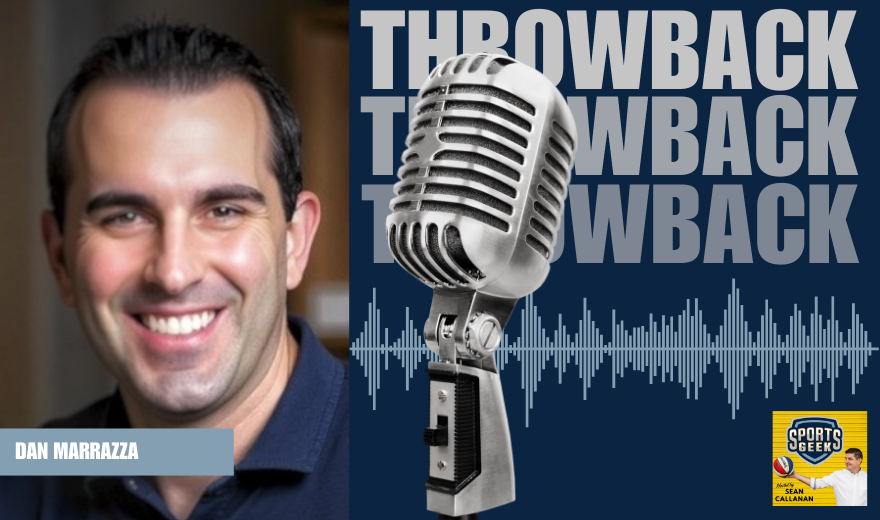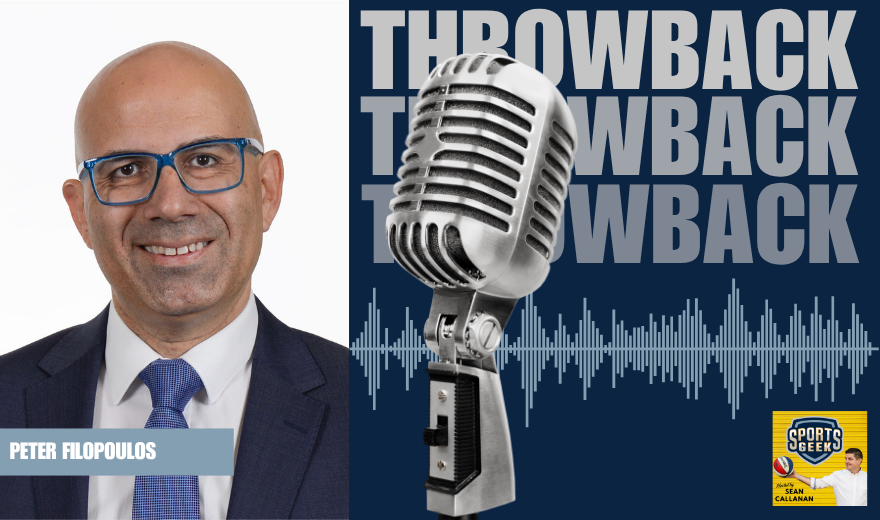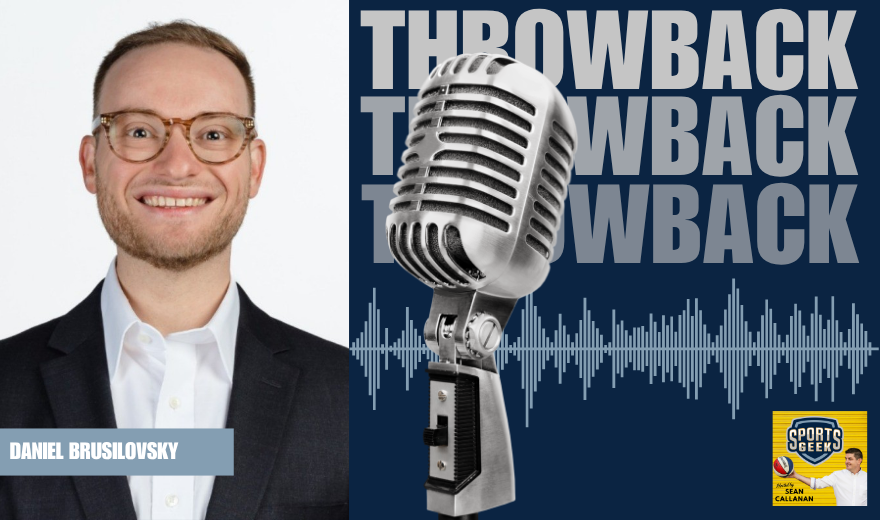In this Sports Geek Throwback episode, Sean Callanan interviews Dan Marrazza from episode 333
Can't see podcast player? Click here to listen
Key Takeaways
In this Sports Geek Throwback, Dan and Sean discusses digital stats and why exposure rate is so important:
- Quality content consistently outperforms high-volume posting strategies in terms of exposure rate
- Understanding platform-specific algorithms is crucial for maximising content visibility
- Strategic posting schedules and content timing significantly impact exposure rates
- Cross-platform analytics provide deeper insights into audience behavior
- Regular metric analysis helps optimise content strategy and resource allocation
This transcript has been lightly edited by AI
Sean: And one of the things you wrote an article, and we quoted an article regarding looking at exposure rate as a metric as a sort of a way to take away the algorithms effect on what you can do. Unfortunately sometimes at C level, they look at your follower numbers and then they look at whatever metrics you're reporting on. This is here's how many people liked it, or here's our engagement rate and those kinds of things. But you don't get to control how many people of your followers get to see it. Do you want to explain why you think exposure rate is a metric that works for you and why it could be useful for others?
Dan: For sure, and it has an incredibly interesting origin. I'm definitely someone who's run with it quite a bit, but I'd be lying if I did not credit an entire village of folks that were part of creating this. This was really a brainchild that came out of DraftKings. Our analytics team there was some of the smartest people I've ever seen in my life. These are MIT math guys. I always joke, we got five Good Will Huntings down the hallway from us, just because the way they were able to slice and dice numbers.
I pride myself on being a common-sense person that can see what the problem is and how we figure out what we need to solve. The way this originally started was we were going to launch our DraftKings sportsbook and have five thousand followers the first day and a year from now we'd have a hundred thousand followers hopefully. How do we compare our content consistently to ourselves when the business is scaling up and growing so much?
So what the metric is – we got the math guys in the room and they start coming up with things that even I could figure out, which might be the smartest thing they ever did. What the number is for those out there is relating the reach of your content relative to the size of your audience. For example, if you have 100,000 followers and the post is seen by 100,000, has 100,000 impressions, it's an exposure rate of 100%.
It relates to the size of your audience. Whether you have 20 followers or 2 million followers, the new thresholds of what you need to achieve change. One reason this came about was engagement rate has always been a popular metric in the past and I noticed a lot of flaws in it. What I would notice would be that posts would go viral with 4 million impressions and would have like a 0.2 engagement rate.
And then you would have another post that had only like 20,000 impressions and would have like a 4.2 engagement rate. As the common sense guy, I might not be the MIT guy out there, but I know intuitively that this post with millions of impressions is doing better. I started to notice that with engagement rate, there were a lot of flaws in it. It was very arbitrary often what numbers were breaking through.
As it started to be built out and we could track our performance more consistently, it also unearthed other things I've taken further since leaving DraftKings. One is not all engagements are created equal, especially when the algorithms are constantly changing. No offense Sean, but two likes from you and me are not the same as a retweet from Justin Bieber.
I can say intuitively I know the retweet from Bieber is more valuable. But how much more valuable is it? And if you take thousands of engagements within a post, how do you weight all of them simultaneously? You'll see a post that got maybe 20 retweets getting further reach than one that got 200 just because of who was involved. Or you'll see the algorithms change whether a like, retweet, reply, or quote tweet is more valuable.
These things are always changing. The one thing that doesn't change though, is if it's breaking through and reaching a wider audience. This allows you as the algorithm changes to consistently track what's breaking through and do it in a number that makes more sense. In different companies I've worked with, I've been fortunate that many executives have some literacy in it.
I could tell them 120,000 impressions and they ask “Is that good? Is that bad?” But if you're able to relate it in a way that's digestible and relevant to the size of your audience, it's easier for them to understand. If we could compare ourselves to ourselves as we've scaled out, we could also compare ourselves to other companies that have different following sizes.
As you see in pro sports leagues, you'll always see the big market teams in the NBA, the Lakers, the Celtics will always have the biggest bulk numbers. But that doesn't necessarily mean they're doing the best, because you can't necessarily compare the Denver Nuggets or Utah Jazz to Los Angeles Lakers – the brands are so different. So we learned it was an effective way of leveling that playing field.
Whether it's as a pro sports franchise or another company, you're able to say, we're the Pro Football Hall of Fame, we have 300 plus thousand followers approximately on each platform, but relative to the size of our platform, we actually reach more people on Facebook and Twitter than any team in the NFL does. That's a number we can use internally to gauge performance better.
It's certainly helpful to have software involved, but you can do this with an iPhone calculator. You just take the number of impressions of the post and divide it by the number of followers you have at the time of the post. It comes out to a decimal – move two spots to the right, add your percentage number at the end.
It's been so effective for communicating internally and providing context. When I think of all the years I worked in sports not having this metric – how many times did I think I was doing well when maybe I wasn't? Or how many times was I discouraged when I actually was doing well? It's been a game changer.
Sean: Definitely. With all stats, it's about how you do that storytelling for the people who need the story to be told. When you're looking at these stats, yes, you're looking at it for your own internal use and your team to understand how to do it, but also what do the C level understand? Breaking it down, keeping it relatively simple, but also being able to compare yourselves with other accounts of different sizes.
If you want great engagement rate, don't grow, just keep staying small. It disincentivizes your growth targets. When you're driving a lot of video content, you're getting lots of views but not comments because that's not what the algorithm is pushing. We're building an audience with video. Coming up with those metrics – I like exposure rating especially when you're trying to grow and want to know how you're doing, it's really effective.
Listen To Sports Geek
Recent Sports Geek Reads
- AI Ticketing Innovation, Eleven Lab celebs & Disney’s YouTube TV Dispute
- Streaming’s Impact on Fandom & Excel Sports’ $1B Valuation: How Digital Media is Reshaping Sports
- From Wealthy Families Investing in Sports to MrBeast’s Theme Park: The Business Behind Sports Entertainment
- NYC Marathon’s Billion-Dollar Business & AI Revolutionizing Ticket Buying
- NBA AI Tech stack, OpenAI hits 1B business customers & Legal ruling on AI usage
- NASCAR Antitrust Victories & AI-Powered Racquet Sports: Legal Battles & Innovation









